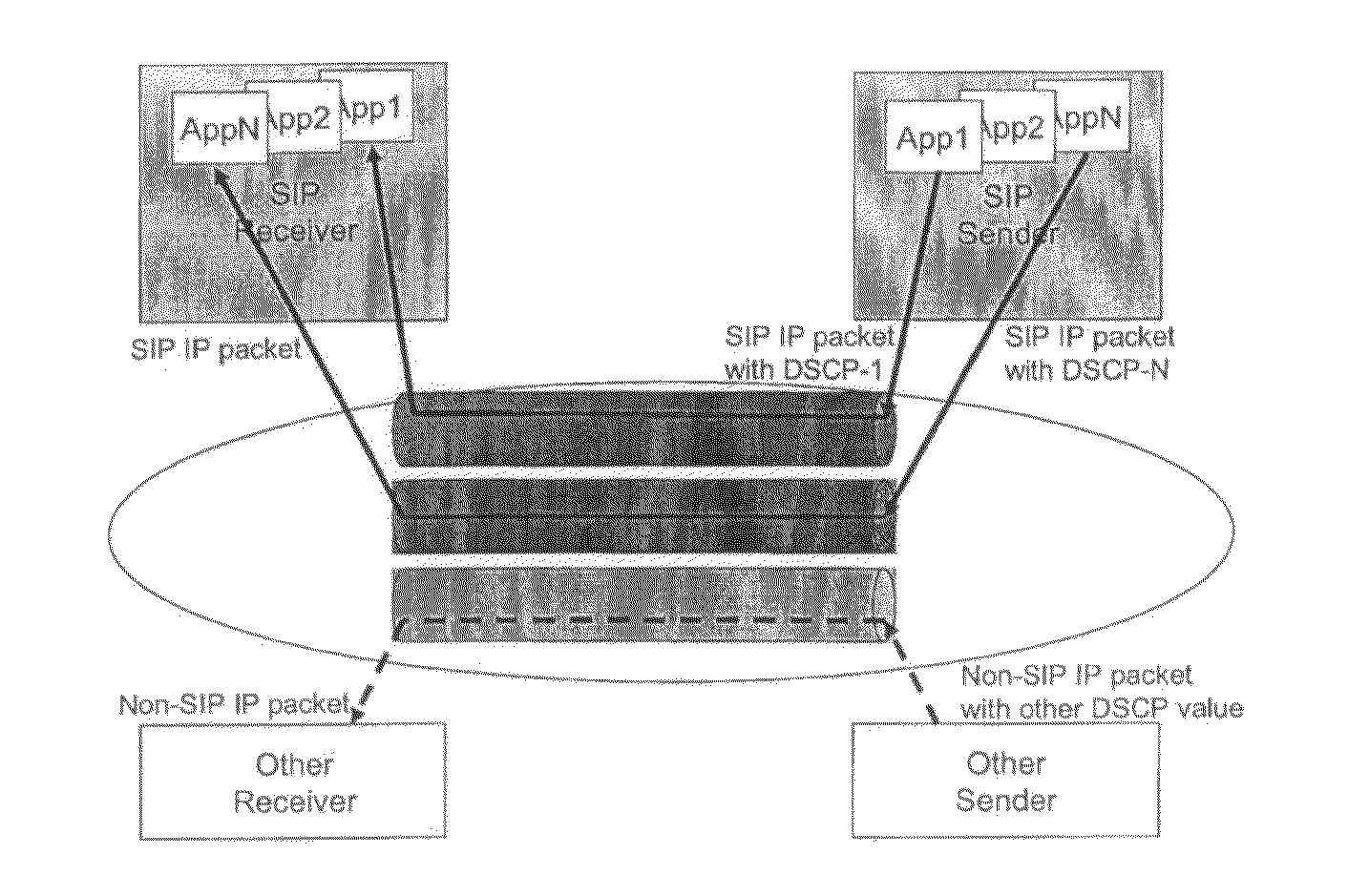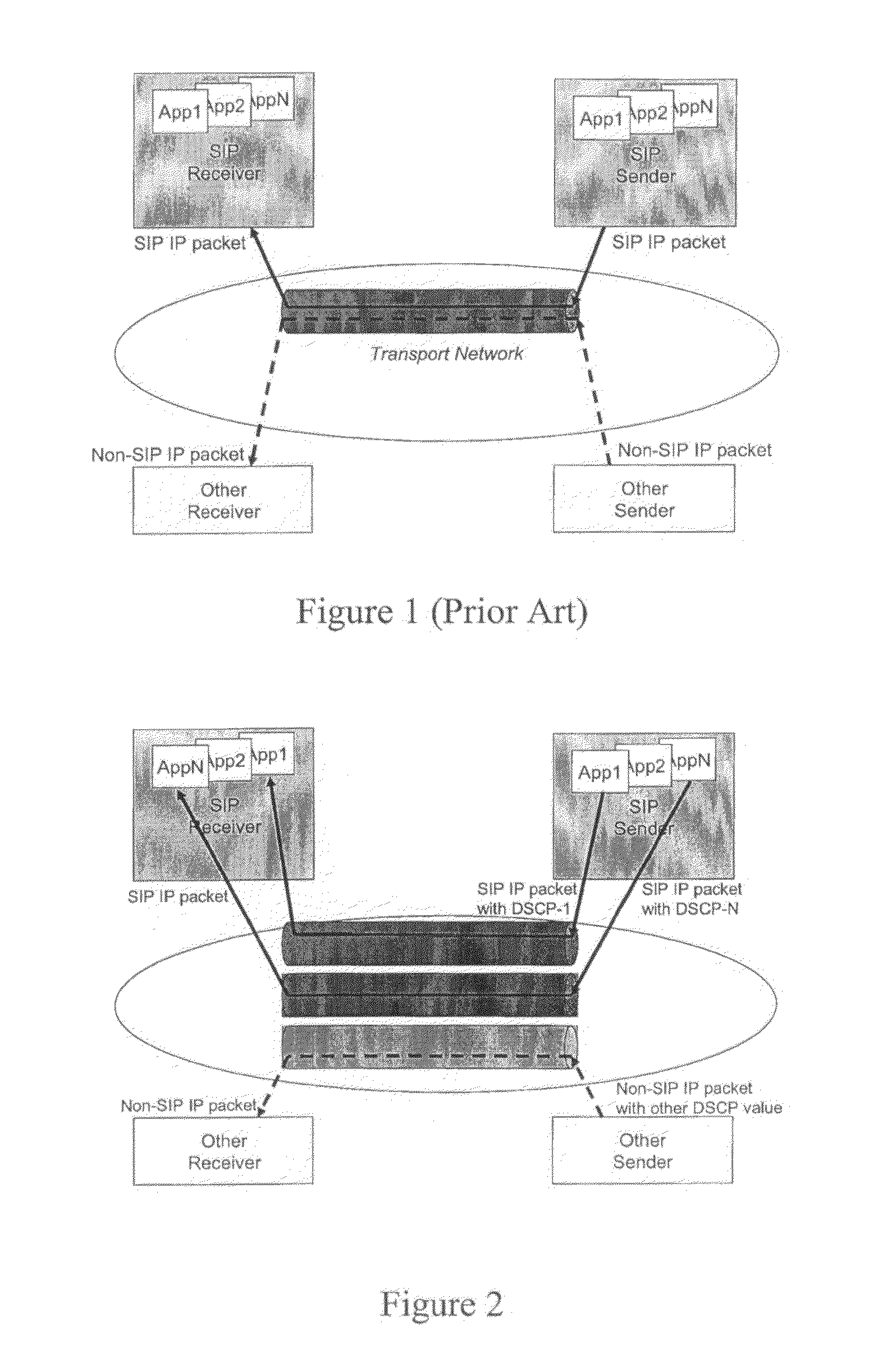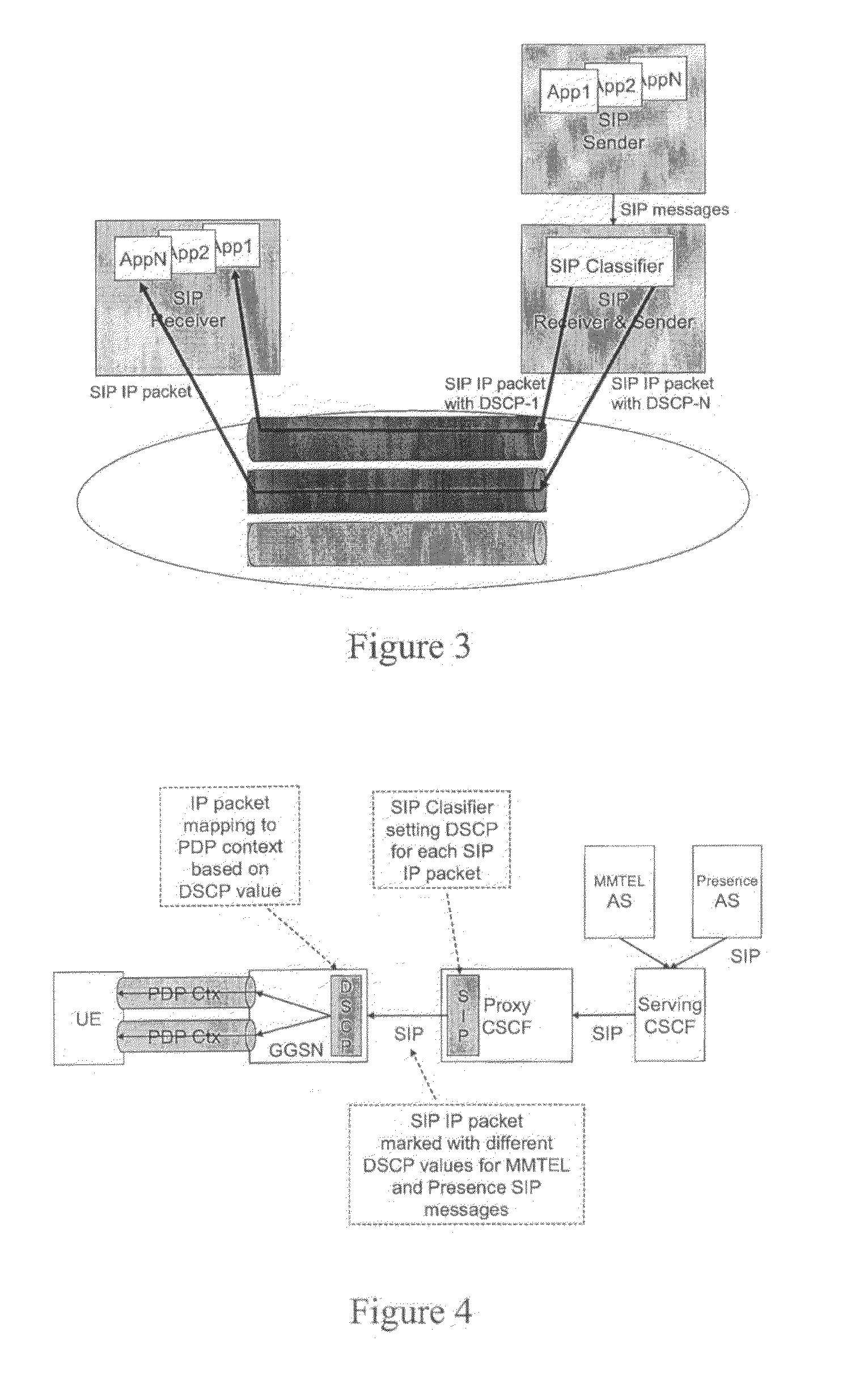Prioritising Messages in a Communications Network
a communication network and priority message technology, applied in the field of priority message in the communications network, can solve the problems of non-time critical, adversely affecting the higher priority sip and non-sip signalling, and large amount of non-time critical signalling for presence applications
- Summary
- Abstract
- Description
- Claims
- Application Information
AI Technical Summary
Benefits of technology
Problems solved by technology
Method used
Image
Examples
Embodiment Construction
[0028]Referring to FIG. 2, there is shown a Differentiated Services (DiffServ) aware transport network. Whilst many users may be sending messages over this network, only two example senders are shown. A Session Initiation Protocol (SIP) sender sends SIP messages over the network, and a non-SIP sender sends non-SIP messages over the same network. The header of IP packets containing all or part of SIP messages is accorded a Differentiated Services Code Point (DSCP) value depending on the requirements of the sending SIP Application. It can be seen that the SIP sender may send messages from several different SIP applications, each of which may send SIP messages having different priority requirements. The headers of non-SIP containing IP packets may also be accorded DSCP values. The transport network uses the different DSCP values to apply different IP forwarding behaviour to the SIP containing IP packets and the non-SIP containing IP packets according to installed policies, thereby prov...
PUM
 Login to View More
Login to View More Abstract
Description
Claims
Application Information
 Login to View More
Login to View More - R&D
- Intellectual Property
- Life Sciences
- Materials
- Tech Scout
- Unparalleled Data Quality
- Higher Quality Content
- 60% Fewer Hallucinations
Browse by: Latest US Patents, China's latest patents, Technical Efficacy Thesaurus, Application Domain, Technology Topic, Popular Technical Reports.
© 2025 PatSnap. All rights reserved.Legal|Privacy policy|Modern Slavery Act Transparency Statement|Sitemap|About US| Contact US: help@patsnap.com



